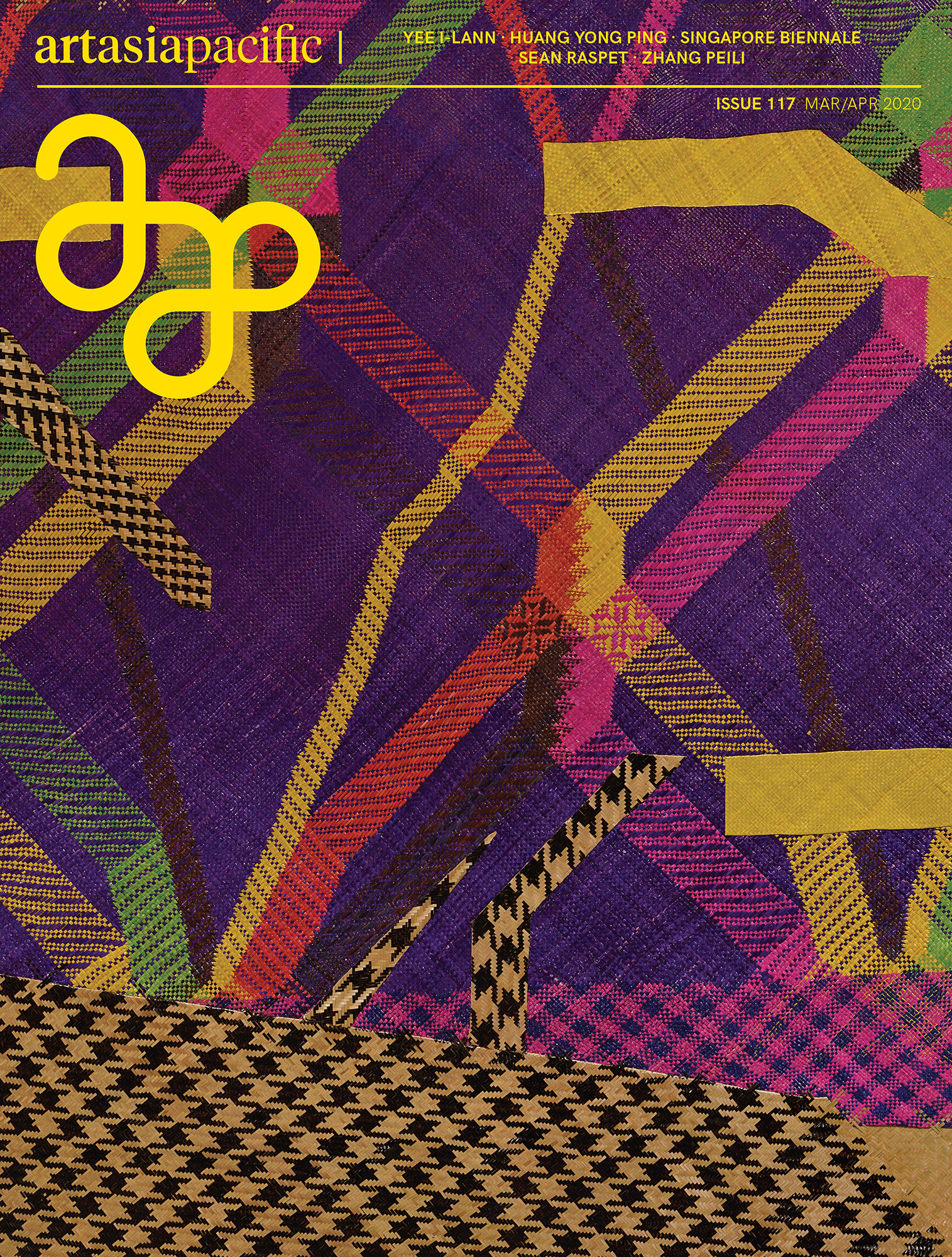March 2, 2020
With governments across Asia imposing quarantines and travel restrictions to contain the spread of Covid-19, and art organizations canceling and postponing events in line with the mandates of health authorities, the questions of how else we might commune and what it means to share space with others are all the more pertinent.
Our cover artist, Yee I-Lann, has long examined these concerns. In late 2016, upon moving back to her birthplace in Sabah, she rediscovered the social importance of tikar (mats). In an interview with ArtAsiaPacific’s Kuala Lumpur desk editor, Beverly Yong, Yee discusses her collaboration with weavers from around the Sabah region, and her principle of mansau ansau, or “to keep journeying without knowing where you’re headed.”
Embracing uncertainty as a fact of life was likewise central to the practice of Huang Yong Ping. In remembrance of the seminal artist, who died in October 2019, in our second Feature, curator Hou Hanru traces Huang’s recurring use of serpentine forms, and the motif’s many varying significances, from metamorphosis to unpredictability.
The works of the three artists featured in the Up Close section probe human ideologies and constructs. AAP associate editor Ophelia Lai examines Li Ran’s two-channel video Persona Swap (2017–19), which muses on what constitutes an individual’s identity. Ho Rui An’s video-essay Student Bodies (2019) traces the roles of students as “the engine and antagonists of capitalist modernization in Asia—as well as the agents of imperialism and their fierce opposition,” in the words of deputy editor HG Masters. And in Jen Liu’s video Pink Slime Caesar Shift (2018), highlighted by managing editor Chloe Chu, the artist tackles the exploitation of people, on the back of which civilization is seemingly built. Elsewhere in Features, for Inside Burger Collection, curator David Ho Yeung Chan interviews Hong Kong-born artist Tsang Kin-Wah on his text-based installations and videos, which convey the artist’s pessimism about “humankind and their self-destructive behavior.”
For Profiles, AAP news and web editor Lauren Long spoke to Chloe Suen, co-founder of Hong Kong’s Sun Museum, which advocates for the study of Chinese arts and culture. In the section’s other article, Haryanto Adikoesoemo, founder of Jakarta’s Museum MACAN, explains the motivations behind his collection of modern and contemporary works by Indonesian and international artists, and the objectives of his museum.
In One on One, Tuan Andrew Nguyen writes about how artist Daniel Joseph Martinez, one of his first mentors, changed the way he thought about collectivity and political agency, and eventually led him to establish, with other artists, the Propeller Group and Ho Chi Minh City’s nonprofit space Sàn Art. Elsewhere in the magazine, AAP Berlin desk editor Clara Tang files a Dispatch from the German capital, looking at the way its institutions have gradually included non-Western perspectives in their programs, allowing for the city to become a veritable global art hub. For the Point, artist and entrepreneur Sean Raspet highlights the contradictions faced by an increasing number of art initiatives on the subject of climate change—the entanglement of the creation of art in broader production systems that contribute to the crisis, and the material costs of realizing such initiatives. Finally, for Where I Work, Lauren Long visited Zhang Peili in one of his Hangzhou studios, where the multimedia artist explained his curiosity about feelings universal to all of humanity, including futility and anxiety, encapsulated in his earliest video, 30 × 30 (1988); 1980s paintings of medical gloves; and more recent interactive installations in which visitors can become trapped. Despite his use of cultural references specific to China, Zhang’s works suggest we all share agency in our responsibilities to process the shifting conditions of our world.
A digital edition of the full AAP 117 March/April issue is now available for purchase on Zinio, Google Play, iTunes, and Magzter.

